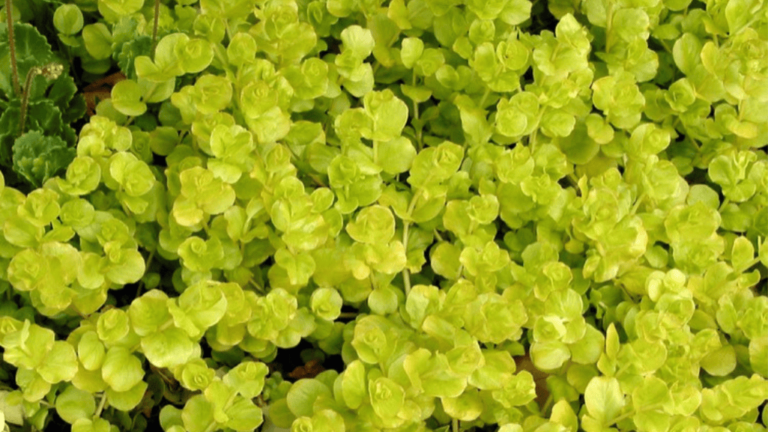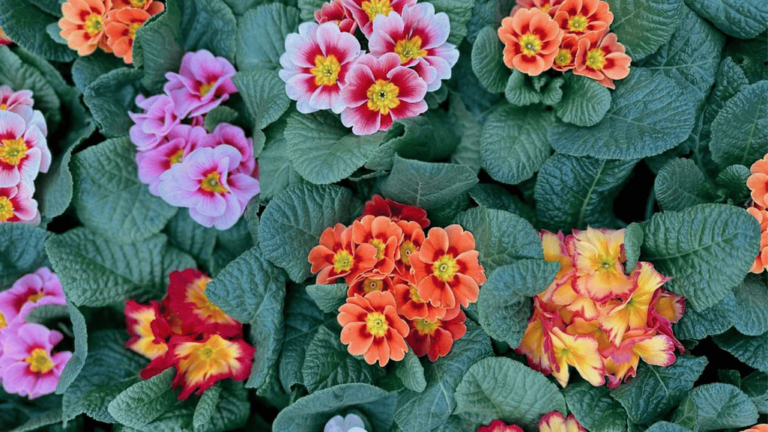Beautiful flowers gardenia Plants For Your homes

Cape Plumerias, also known as Frangipani, are famous for their sweet smell and bright colors. They are the essence of tropical plant care. To keep them healthy and full of flowers, it’s important to know how to water, prune, and take care of them.
These plants need at least six hours of sunlight every day. They also need special soil to prevent root rot. Whether they’re in the ground or a big pot, using the right potting mix and fertilizer helps them stay strong. Pruning them at the right time makes sure they look good and bloom a lot.
Key Takeaways
- Ensure a minimum of six hours of daily sunlight for full growth and bloom potential.
- Adopt a meticulous Cape plumeria watering regimen to achieve the delicate balance necessary to avoid overwatering and under watering.
- Use pots with a good drainage system and a diameter of no less than 40 cm, filled with an appropriate potting mix and fertilizer.
- Protect your Cape Plumeria during colder months by using frost cloths or relocating pots indoors.
- Stay vigilant against pests and diseases, implementing organic or chemical treatments as needed.
- Regular Cape plumeria pruning promotes a healthy structure and enhances the aesthetic appeal of the plant.
Understanding Cape Plumeria’s Tropical Origins
Starting to care for Cape Plumeria means learning about its rich, colorful roots. This plant, also known as Hawaiian Plumeria, has grown well in tropical places for many years. It’s adapted to the bright sun and unique challenges of its home.
Origins and Natural Habitat
Cape Plumeria calls Hawaii home, blending with the area’s culture and nature. Its care is deeply rooted in its tropical beginnings. The warm sun and sea spray shape its growth and when we understand this, we can better care for it.
Adaptability to Various Climates
Even though it’s a tropical plant, Cape Plumeria can grow in different places. To keep it healthy, we must mimic its natural environment. In cooler areas, using containers lets us move the plants to protect them from the cold.
Learn more about caring foryour Cape. This ensures it not only lives but flourishes outside its tropical roots.
Whether it’s by the sea or indoors, caring for Cape Plumeria is all about creating the right conditions. By doing so, we help it show off its bright colors and sweet scent.
Essential Soil Requirements for Cape Plumeria
Knowing the best soil requirements for Cape Plumeria is key for its health and beauty, especially in places like Fort Lauderdale. These plants do well in soil that’s similar to their natural home, where soil quality is very important.
Ideal Soil Composition and pH Level
Cape Plumeria needs soil that drains well and is a bit acidic to neutral. Mixing perlite, coarse sand, and organic stuff creates the perfect soil. This mix helps roots stay healthy and helps the plant get the nutrients it needs to thrive.
| Component | Description | Benefit |
|---|---|---|
| Perlite | Volcanic glass that’s expanded and popped | Improves aeration and drainage |
| Coarse Sand | Large-grain sand | Enhances soil structure and drainage |
| Organic Matter | Compost or peat moss | Enriches soil with nutrients |
Ensuring Proper Drainage to Prevent Root Rot
Good drainage stops water from pooling, which can cause root rot in Cape Plumeria. Using a special cactus mix or a mix with lots of coarse stuff helps a lot. For plants in pots, pick pots with good drainage holes to keep moisture from building up.
By following these soil requirements for Cape Plumeria, gardeners can create a better environment for growth. This also makes their tropical gardens look better. For more tips on making a vibrant tropical garden in Fort Lauderdale, check out the guide on tropical climate gardening.
Maximizing Cape Plumeria Sunlight Exposure
Ensuring your Cape plumeria gets enough sunlight is key for its growth and blooms. Cape plumeria care means paying close attention to how much light it gets. This is true for both indoor and outdoor plants.
The Impact of Sunlight on Growth and Blooming
Sunlight is crucial for Cape plumeria. These plants do best in full sun, which helps them grow and bloom. They need at least six hours of sunlight daily. Without enough light, they may not bloom much or grow well.
Best Practices for Indoor and Outdoor Sunlight Access
If you’re growing Cape plumeria indoors, put them near bright windows. Turn them regularly so they get light evenly. For outdoor plants, choose a spot that gets a lot of sun all day.
During hot summer months, you might need to give them some afternoon shade. This prevents the leaves from getting too hot.
In places with changing sunlight throughout the year, adjust your plants’ position as needed. Use shade cloths during the hottest part of the day to protect them from too much sun.
Creating a sunlight chart can help you decide the best spot for your Cape plumeria. This way, you can make sure they get enough light without burning their leaves.
Following these tips will help your Cape plumerias get the sunlight they need. This ensures they grow and bloom well, showing great care in your garden or home.
Effective Cape Plumeria Watering Techniques
Proper Cape plumeria watering and tropical plant care are key to keeping this plant healthy and blooming well. Knowing how to water it right can make a big difference in its health and how often it blooms.
Cape Plumeria, being from the tropics, needs different amounts of water at different times of the year. It’s important to change how much you water to match the natural wet and dry cycles it would have in the wild.
Watering Schedule Adjustments for Seasonal Changes
In the summer, Cape Plumeria needs lots of water to grow well. But when fall comes, you should water it less, letting the soil dry out a bit between waters. Don’t water it much in winter, especially in cold places, as it’s dormant. These changes help prevent root rot by not keeping the plant too moist.
Recognizing Signs of Overwatering or Underwatering
Watch for signs to avoid watering mistakes. Too much water can cause yellow leaves, a mushy base, or a bad smell from rotting roots. Not enough water makes leaves droop and turn dry and crispy. These signs mean you need to change how often you water your Cape Plumeria.
Following these watering tips will help your Cape Plumeria not just survive but flourish. It will show off all its beautiful tropical traits.
Fertilizing Cape Plumeria for Optimal Growth
For those who love the bright blooms and full growth of Cape Plumeria, knowing how to fertilize is key. The right fertilization boosts plant health and increases flower production. This makes sure your Cape Plumeria stands out in your garden.
Selecting the Right Fertilizer Composition
Choosing the right fertilizer is crucial for Cape Plumeria. A fertilizer with more phosphorus, like a 10-30-30 NPK mix, helps with lots of blooms. Excalibur BOOST Plumeria Fertilizer is a great choice with its 10-12-14 NPK and extra boron. It supports strong growth and beautiful flowers.
Understanding Fertilization Frequency and Dosage
How often and how much fertilizer you use is important for Cape Plumeria. Fertilize every two to three weeks when the plant is growing well. Use less fertilizer for young or small plants and more for big ones. Cut back on fertilizing in winter to help the plant get ready for sleep.
By following these fertilizing tips, your Cape Plumeria will not just live but flourish. It will show off its beauty year after year. The secret is to know what this plant needs and adjust your care to fit its unique needs.
The Art of Cape Plumeria Pruning
Learning how to prune Cape plumeria is key to keeping it healthy and looking great. It’s important to know when and how to cut back for the best growth and blooms.
Pruning for Health: Removing Dead or Diseased Branches
Dead or diseased branches can harm the Cape Plumeria’s health and look. Cutting them out stops infections from spreading. Pruning in the winter, when the plant is dormant, saves energy for spring growth.
Pruning for Shape and Structure
Pruning helps with both health and shape. It keeps the plant looking good and in check in your garden. But, be careful not to cut too much on young plants, as it can delay blooming.
| Plant Measurement | Details |
|---|---|
| Height Variations | 36-48 inches, 4-6 feet, 6-8 feet, 8-10 feet |
| Spacing Options | 24-36 inches to 6-8 feet |
| Hardiness Zones | USDA zones 8a to 11 |
| Poisonous Parts | All parts are considered poisonous if ingested |
| Water Requirements | Drought-tolerant, suitable for xeriscaping |
| Soil pH Requirements | Mildly acidic (6.1 to 6.5) |
| Propagation Methods | Dividing the rootball and semi-hardwood cuttings |
Cape Plumeria Care Throughout the Seasons
Caring for Cape plumeria means adjusting as seasons change. These plants need special care to thrive all year. From watering to sunlight, each season has its own needs.
Seasonal changes affect Cape Plumeria a lot. In cold months, cut back on watering since they sleep. Just enough water to keep roots moist is enough.
Spring brings Cape Plumeria back to life as it gets warmer. It’s a good time to feed them with a special fertilizer. This helps them grow strong and bloom well. Also, it’s a good time to move them to better soil to prevent root problems.
In summer, Cape Plumeria needs lots of sunlight to bloom. Adjust watering to match the weather and rainfall. They need steady moisture when they’re growing fast.
As autumn comes, get your Cape Plumeria ready for winter. Cut back on watering and stop feeding them. Watch for leaves turning yellow, which means they’re getting ready to sleep.
The table below shows what to do for Cape Plumeria in each season. It helps both new and experienced gardeners:
| Season | Watering | Fertilization | Additional Care |
|---|---|---|---|
| Winter | Once a month | None | Monitor for indoor heating impact |
| Spring | Increase as temperatures rise | Resume bi-weekly with high-phosphorus fertilizer | Transplanting if needed |
| Summer | Once a week or more | Continue bi-weekly | Ensure adequate sunlight |
| Autumn | Decrease gradually | Stop before temperatures drop | Prepare for dormancy |
Following these seasonal tips will help your Cape plumeria grow strong and beautiful. They’ll add exotic beauty and sweet smells to your garden all year.
Implementing Cape Plumeria Pest Control Strategies
Keeping your Cape Plumeria healthy and vibrant takes more than just watering and sunlight. It also means being proactive about pest control. These beautiful plants can get pests that slow their growth and reduce blooms.
Common Plumeria Pests and How to Identify Them
Rust fungi are a common problem for Cape Plumeria. They show up as yellow spots on the underside of leaves, causing leaves to drop early and weakening the plant. Catching this early helps you act fast to stop it from getting worse.
Aphids, scale insects, and spider mites also bother Cape Plumeria, especially in warm, dry times. Aphids leave sticky honeydew, scale insects look like small bumps, and spider mites create fine webs. Knowing what to look for helps you tackle these pests early.
Organic and Chemical Control Options
For pest control, you can use organic or chemical methods. Keeping your plants clean is key to fighting pests. Clean up fallen leaves and keep plants well-spaced to improve air flow and reduce pests.
If pests don’t go away, you might need to use fungicides or insecticides. For a green approach, neem oil and insecticidal soaps work well. In tough cases, chemical pesticides might be needed. Always follow the instructions to protect your plant and the environment. Check out University of Hawaiʻi’s CTAHR website for tips on managing pests safely.
Preventive treatments can help during peak pest times. These steps keep your Cape Plumerias looking great and pest-free, stopping problems before they start.
Propagating Cape Plumeria Successfully
Starting with tropical plant care can be exciting, especially when you learn about propagating Cape plumeria. This flower adds vibrancy and fragrance to any space. Spring is the best time to start, using seeds or cuttings from plants like the Chiang Mai Girl or Tesla Girl JJ Plumeria.
The Cuttings Method: A Step-by-Step Guide
For cuttings, pick pieces that are 6-12 inches long. These lengths have a high chance of rooting well, which is key for growing new plants. Remove all but the top leaves from the cutting and dry the cut end for a few days to prevent rot.
Using a rooting hormone can also help. Put the cutting in well-draining soil to help it develop roots.
Caring for Plumeria Seedlings
Propagating from seeds requires patience. It can take up to three years for seedlings like Plumeria Diva FCN or San Germain to grow. Keep the soil moist and warm to help them grow.
Plumerias need a lot of light, about 5-6 hours of sunlight. If you can’t give them full sun, at least four hours of sun will help. Be careful with the sap, as it can be irritating to some people.


















